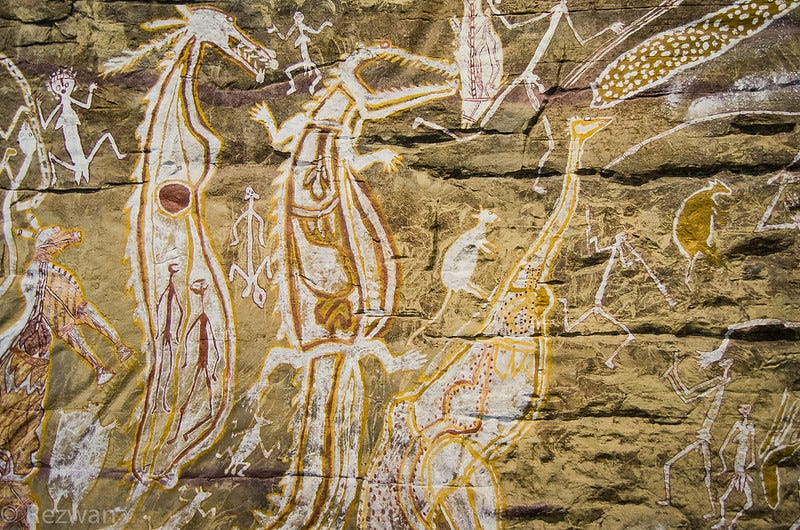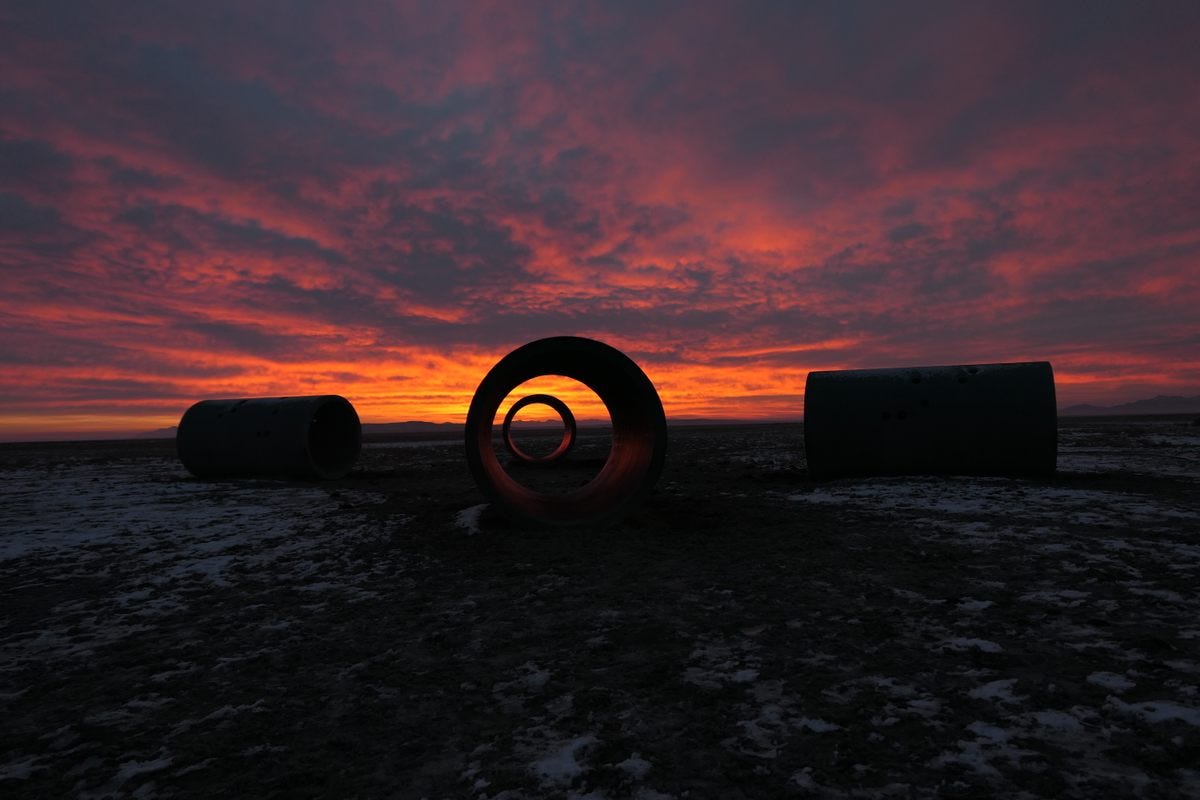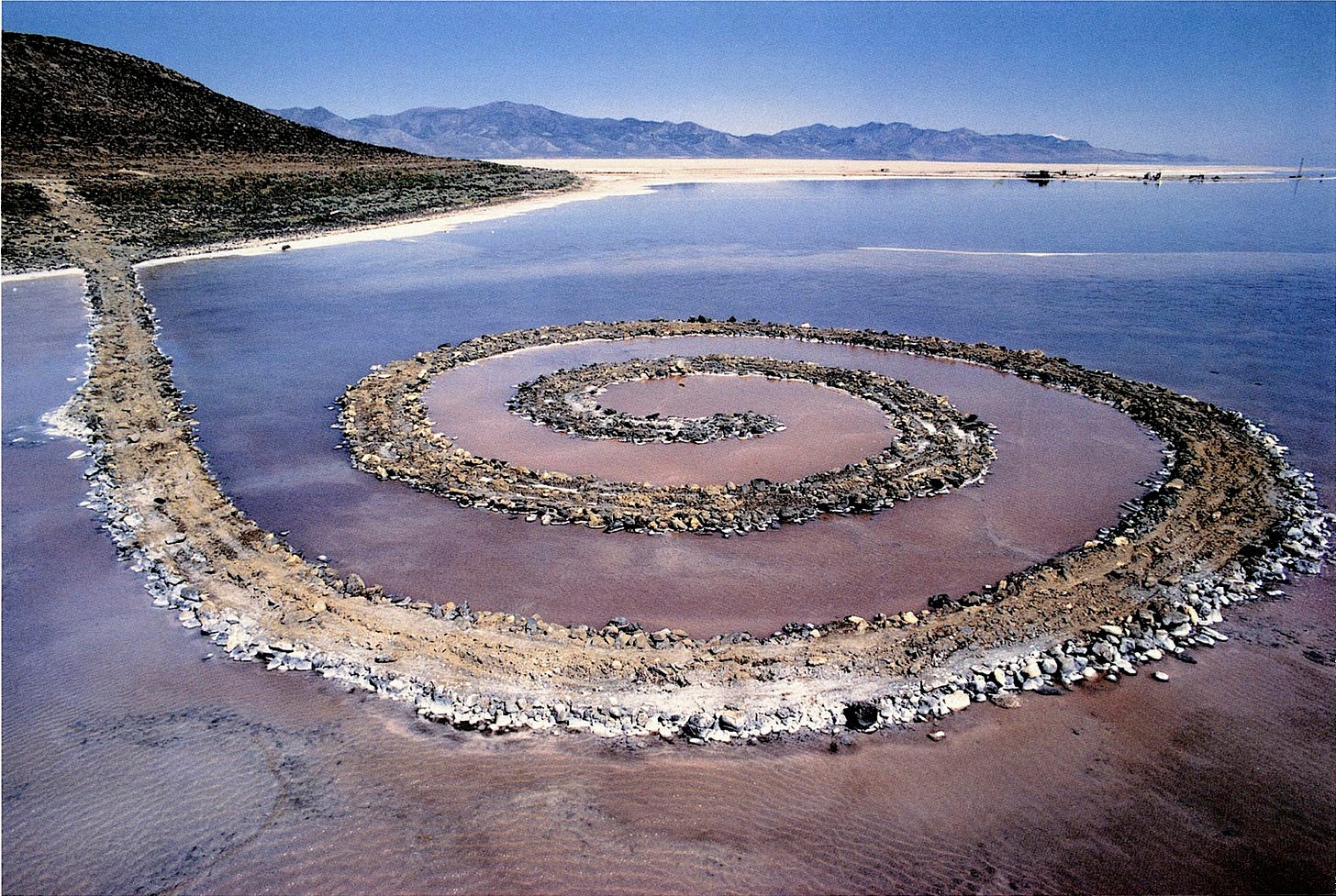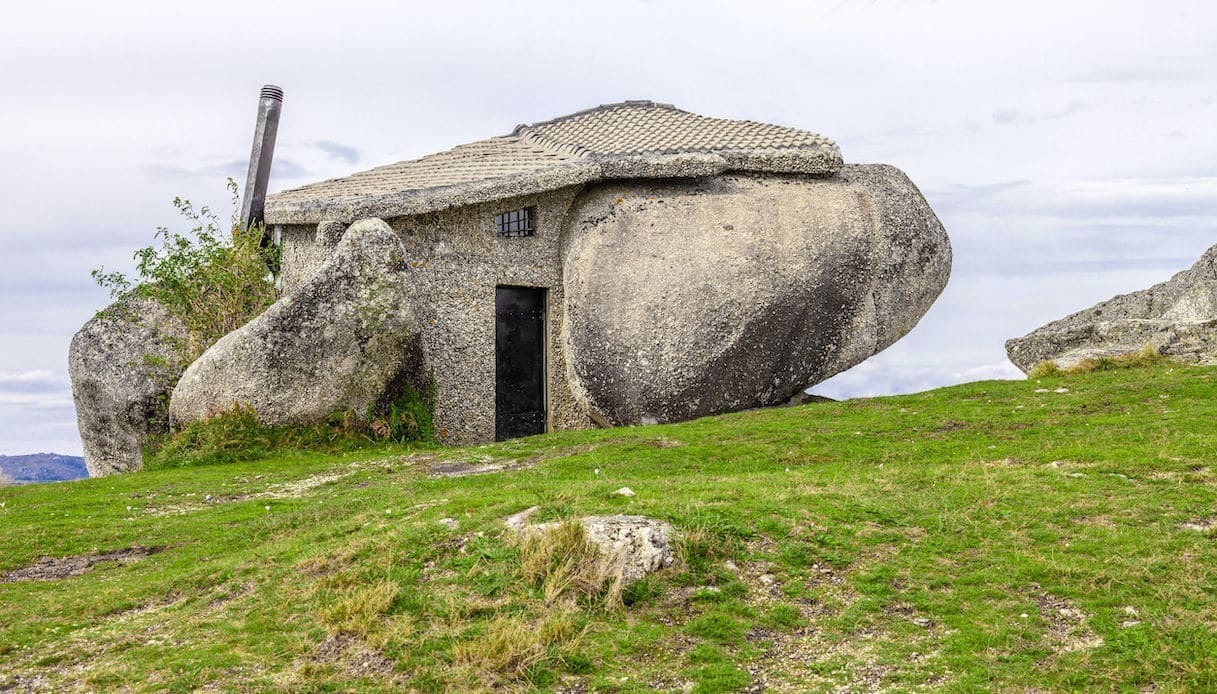Land art, described by the Tate as: “ … art that is made directly in the landscape, sculpting the land itself into earthworks or making structures in the landscape using natural materials such as rocks or twigs”.1 Its rise is attributed to the conceptual art movement of the 1960s and 1970s which freed artists from traditional studios, galleries and exhibitions within which to create and display their work.
Land artist, Andrew Rogers, once stated that, in Australia, there hasn’t been very much land art (compared to the movement in America and Europe). This had a great deal to do with the question of whose land it is. The politicised nature of conceptual artists meant they would have been highly aware of the political, cultural and sacred aspects of Australian territory. However, limiting himself to this contemporary vision of land art, he failed to see the rich history and vast landscape of land art across the continent.2
In 1788 when the British established a permanent European settlement in Eora country (Port Jackson, Sydney Harbour) they landed in the middle of a huge art gallery containing at least ten thousand examples of rock engravings and etchings dating back to ancient times.
Wurundjeri tribe elder, Burnum Burnum3
In fact, the entire continent is a gigantic gallery, with art exhibits of up to 20,000 years old.

Whereas modern land artists were motivated by opposing the limitations of gallery invitations and space, ancient land art was a spiritual, cultural and educative endeavour. It arose out of the artists’ spiritual animism and connection with nature.
Not all contemporary land art is generated out of this drive for connection with the land, but some is. Andrew Goldsworthy, who we met last week creates structures, paintings and drawings using what is naturally available at his chosen site, whether it be the North Pole or a tiny rock pool in Scotland. His work is an exploration of his relationship with nature. American artist, Nancy Holt departed from the use of naturally available materials but was nevertheless inspired by a desire to highlight the environment and draw attention to it. This seems to be more important now than ever, especially given some of the comments people make when they visit a site of a natural beauty - reading more like reviews of a restaurant or hotel.

Does this remind you of Andy’s Touching North?
Nancy’s Sun Tunnels is an installation located in Utah’s Great Basin Desert. It looms on the horizon, seen from as far as a mile away. The tunnels are aligned with the rising and setting suns of both the summer and winter solstices. Small holes in the tunnels cast light onto the inner walls in the pattern of four stellar constellations.4
To me, although I don’t believe intended, the work harkens back to our ancestry and those megaliths which often have solar or astral alignments, monuments to the passing of the seasons, and to the cycle of life and death. She herself wrote that at Sun Tunnels “the feeling of timelessness is overwhelming.”5
The piece was inspired by a revelation Nancy experienced of both her inner and outer landscape being identical. As she worked, she expressed the feeling of being more extended into the world than she had been before.6 While I am not particularly fond of forty ton concrete tunnels plonked in the middle of the desert, this is undoubtedly a spiritually motivated work, the process of which linked heaven and earth, and the artist not only to the world, but also in time. Although less transient than Andy’s ephemeral art, it is no less fragile. With this understanding comes appreciation.
It is also remarkable that the endeavour was undertaken during a period of grief for husband, also a land artist. Interested in the changing colours of salt lakes, Robert Smithson, Nancy’s husband, took a trip to the Great Salt Lake, also in Utah, to view the water which cut the lake in two. It had been described to him as the colour of tomato soup and there, he wanted to create art. He had no concept except to let the land dictate its direction. He created Spiral Jetty.

It took two dump trucks, a tractor and a large front loader to move 6650 tons of the basalt, sand and soil required for the work. He began with a diagonal line of stakes extending out from the land. He then tied a string to a central stake to mark out the spiral. The work was riddled with hazards, particularly mud threatening to suck machinery into its depths. It is an astonishing feat of construction given that from the outset it was built with its ultimate destruction in mind.
“… he spoke of buildings that "don't fall into ruin after they are built but rather rise into ruin before they are built”.7
Spiral Jetty was created with temporality in mind, anticipating its continual change through various environmental influences, including both nature and human action. And only a few years after completion it became completely submerged beneath water for three decades after. More recently it reappeared, but the reddish tint of the water had evaporated, leaving only rocks on white sand filled with salt crystals.

Moving 6500 tons of natural material for art sits uneasy with me, especially when so few get to see it. As much as the movement challenged the boundaries of artistic endeavour, this, like Sun Tunnels, failed in accessibility of art for all, a value of the original conceptual artists. In some ways, it could be argued this scale of land art is more elitist than work confined to gallery space. In defence of Spiral Jetty, its supporters argue that the visual record, both film and photographs, are as much a part of the work as the structure itself. But these are not the art. For those who have studied the work at length, the photographic documents are not the same as the experience of being there. Of those who get to walk the spiral (which the artist encouraged), it is an almost spiritual experience.
It was such a desolate space and to see. It was like an exclamation point on the horizon. It gives a way into the bleak landscape, something to hold onto.
Art historian, Travis Clarke of Utah Valley University8
Similarly, Rebecca Taylor, who works in arts communications, described her unique experience:
I realized that I had made a pilgrimage in search of a monument, an icon of culture and history, but found pleasure in the aesthetic of transience instead. Spiral Jetty looked nothing like I’d imagined … and I’m grateful. Grateful because I saw the work on September 25, 2010 and no one will ever replicate the experience of seeing it on that day, for it reinvents itself with every change of light, tide, and weather.9
In his essays, Robert Smithson proposed that the sites of his work are not separate from the art itself. He referred to them as non-sites. The site is the project. For Spiral Jetty, he was particularly focused on the perception of scale, from small to vast, an effect he achieved by placing the work against a backdrop of distant mountains, which were almost minuscule on the horizon, an effect also achieved in Nancy’s Sun Tunnels. In architecture more generally, the site is viewed as separate from project. Land is cleared, making space for the project. They are not integral. Land art, however, has influenced architects to think more about site as project.10 This is most visible in earthship homes and similar natural builds.
However, this might be taking the concept a little too far:

Up Next
After 52 years, it’s still not finished, and though the largest work of art to ever be created, no-one is able to go see it without the artist’s permission. Next week we’ll look at the extremes of land art and what can be learned from their creation.
Embers
Spending time with
was a soothing balm which made my reentry into Substack readership a pleasant, sit-by-the fire cosy. Not that all her posts oozed cosiness, in fact, I learned all the stark realities of raising sheep and chickens, the misery of having to light a temperamental stove to get a cup of morning coffee, and to-do lists longer than the hill - but oh the joy of that extraordinary landscape and her gorgeous prose.As I said to Susie, starting from the very first post and working my way to the chronological next was like reading a book, making each return visit an occasion. I loved the sense of story this approach gave me, the sense of place and the sense of person. I know I will enjoy returning to Susie’s Hill many more times in the future.
I’m going to continue with this approach for a while and next week, as
encourages us to read someone we’ve not read before, I will spend some time with two people I visited when they first established their stacks, but didn’t get around to returning to: and .Thank you for reading,
cited in OAKLEY, R. (2016). ONE GIGANTIC GALLERY: LAND ART IN AUSTRALIA. Garden History, 44(2), 159–170. http://www.jstor.org/stable/44987899
op. cit.
op. cit.
I made notes about six months ago in preparation for this series and now I am not sure the exact source of this quote. I also made a note to fact check the wording, so I suspect it was from a YouTube video.
Hogue, M. (2004). The Site as Project: Lessons from Land Art and Conceptual Art. Journal of Architectural Education (1984-), 57(3), 54–61. http://www.jstor.org/stable/1425781





Safar, thank you, from my heart again… I am overwhelmed (slightly tearful even) reading your praise for my Substack, I don’t have sufficient words to express my profound gratitude, a simple thank you even from my heart seems insufficient… but it’s said and truly meant.
I am fascinated by these gigantic art works, their beauty (mostly) cannot be denied, though like you, I prefer not to see the landscape shifted and changed by concrete and machinery… I love Nils Udo’s natural (and urban) art, you probably know of this already..
https://www.nils-udo.com/art-in-nature/?lang=en
I can see however the spiritual reasoning behind many despite choice of construction and materials…
Really enjoyed reading this, Safar. The picture of the cave painting from Australia is exquisite. Making this really hit home that art in nature must at the same time come from a place of respecting nature. The artist alongside the creator of the Mother.